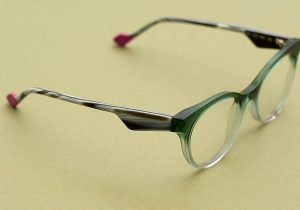How Smoking Affects your Eyes

Recent studies have revealed that smoking can cause eye damage that can lead to, or even worsen, several eye diseases. In some cases, it can also lead to permanent blindness. Smoking eyes are eyes at risk.
While most of us are aware that smoking can cause heart disease and lung cancer, many don’t realise that smoking is a major contributing factor to the early development of age-related macular degeneration and other eye diseases, which put you at an increased risk of losing your sight^. The more you smoke the higher the risk. Research has also shown that compared to non-smokers, smokers are at greater risk of developing:
- Age-related macular degeneration (AMD)
- Cataracts
- Glaucoma
- Diabetic retinopathy and
- Dry eye syndrome.

How does smoking affect your eyesight?
Tobacco smoke is made up of toxic chemicals that are potentially damaging to the eye. The nicotine poisons the optic nerve and over a long period of time actually destroys the nerves, leaving your sight severely impaired.
Smoking causes the protective layer between the retina and blood vessels to erode, resulting in poor circulation, irritation and scarring. It is believed that without this protective layer, the risk of developing age-related macular degeneration increases significantly.
Smoking is also linked to the development of cataracts, a common eye condition. Cataracts usually develop with age and can run in families; however, they can be accelerated by environmental factors such as smoking.
What is age-related macular degeneration?
Macular degeneration is the result of damage to the central area of the retina called the macula, which is responsible for fine detail and reading vision. It can lead to severe and irreversible loss of central vision especially in those over the age of 50. It is the leading cause of blindness in Australia. According to the research study, “smoking is the most important modifiable risk factor for AMD development and progression”^. Smokers are 3-4 times more likely to develop AMD than non-smokers and non-smokers living with smokers almost double their risk of developing AMD.
What are cataracts?
A cataract is a condition where the lens inside the eye becomes cloudy or opaque. This causes a variety of problems including blurry distance vision, sensitivity to glare, loss of contrast, and difficulty seeing colours. Heavy smokers (15 cigarettes/day or more) have up to three times the risk of cataracts as nonsmokers. The only treatment for cataracts is surgical removal of the lens, however, the risk of developing cataracts can be substantially reduced if exposure to factors – like smoking – are avoided.
What is glaucoma?
Glaucoma, known as ‘the silent thief of sight’, refers to the group of diseases that affect the optic nerve at the back of the eye causing irreversible damage. It affects approximately 65 million people worldwide. Without treatment, the fibers that help to transmit visual information from the optic nerve to our brains start to deteriorate, interrupting the flow of information and causing permanent blindness. There is a strong link between smoking and high blood pressure, cataracts, and diabetes, all of which are risk factors for glaucoma.
What is diabetic retinopathy?
Diabetic retinopathy is retinopathy (damage to the retina) caused by complications of diabetes, which if left undetected and untreated, can cause serious eye damage including blurred vision and even blindness. Smoking can increase your chances of getting diabetes. It can also make managing diabetes more difficult for those who already have it.
What is dry eye syndrome?
Dry eye is a common eye condition that affects people of all ages, and increases in severity as we age. Dryness can cause a burning or itching sensation in your eyes and can be extremely uncomfortable. Dry Eye Syndrome is more than twice as likely to impact smokers as nonsmokers.
Save your sight with a regular eye test
Having your eyes tested every 2 years by one of our optometrists is the best way to monitor your vision and stay on top of your eye health – ensuring any changes in your vision can be detected early. Book yours today.







